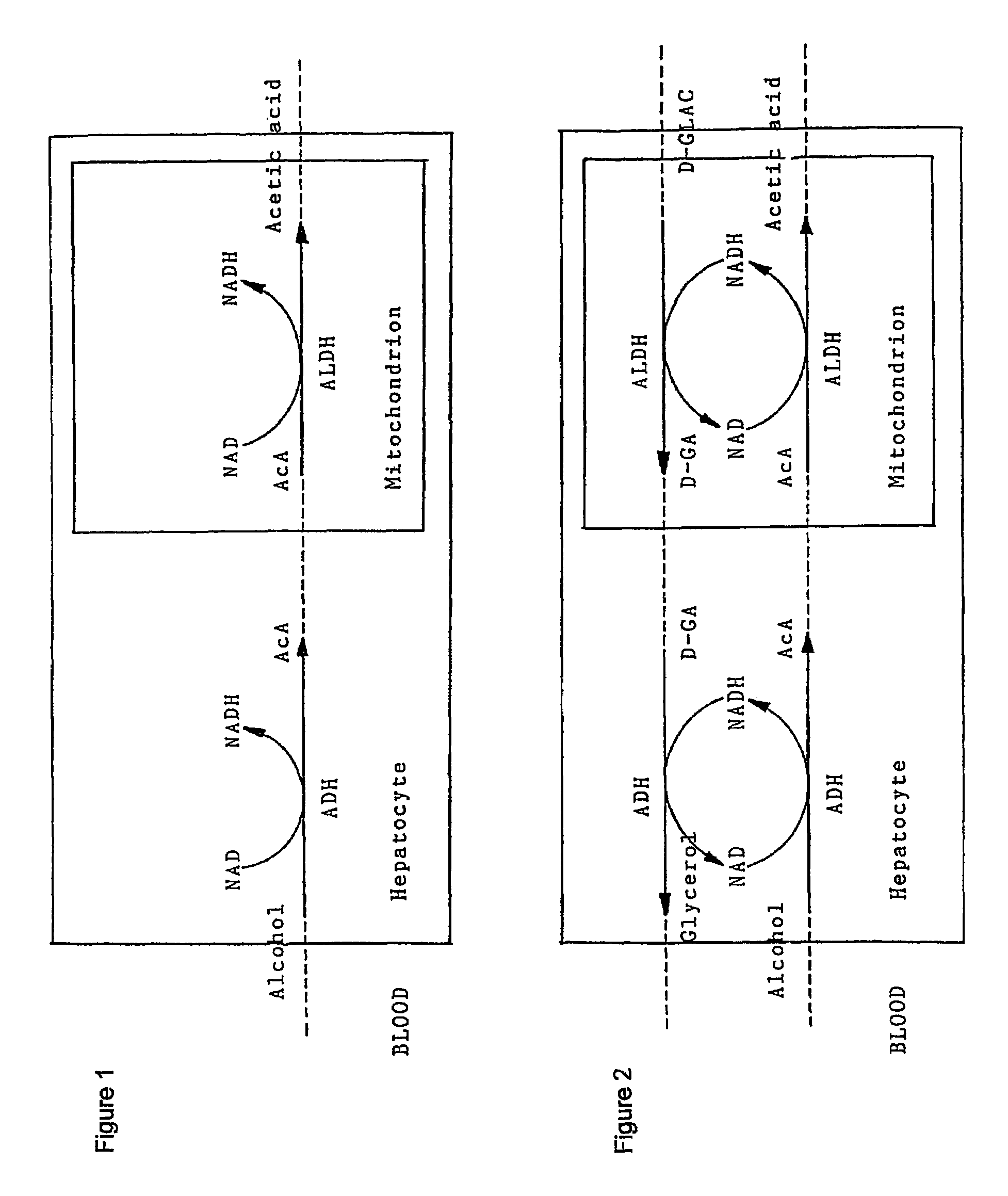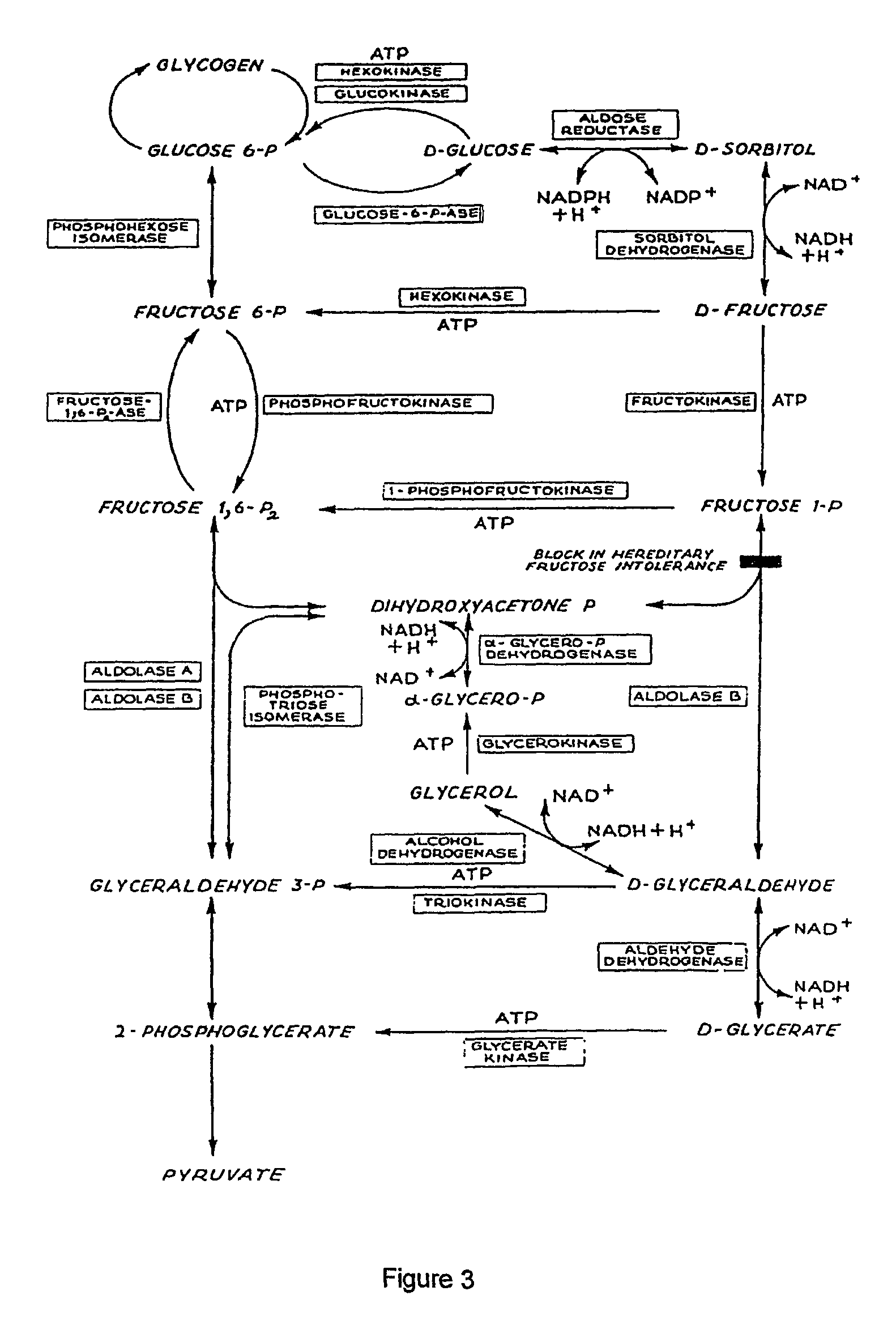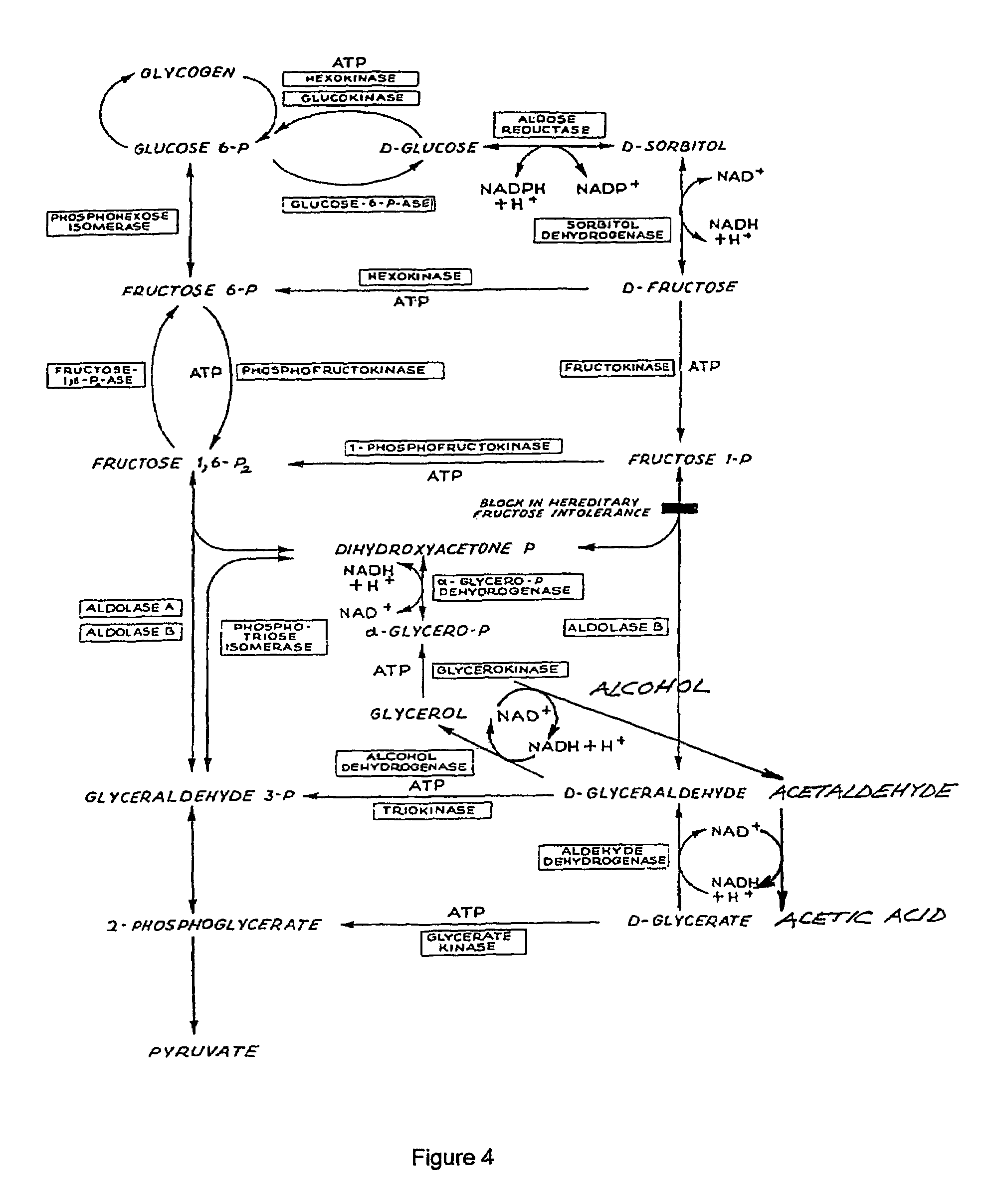Enhancement of alcohol metabolism
a technology of alcohol metabolism and alcohol, applied in the field of compounds, can solve the problems of obliterating the minor benefit achieved, insufficient capacity of alcohol-metabolising tissues to oxidise all, and ingestion of a few grams of alcohol will produce unpleasant symptoms lasting up to several hours, so as to achieve the effect of enhancing the metabolism of alcohol
- Summary
- Abstract
- Description
- Claims
- Application Information
AI Technical Summary
Benefits of technology
Problems solved by technology
Method used
Image
Examples
example 1
[0070]The formation of acetic acid from AcA, mediated by the NAD produced in the reduction of D-GLAC, as described in Reaction 6 above, was demonstrated for the first time.
[0071]320 mg (3 mmol) of D-GLAC, liberated from the commercially obtained hemicalcium salt (Sigma-Aldrich) with sulphuric acid, was added in 2 ml of water to 30 ml of 0.25 mM potassium dihydrogen phosphate buffer solution (pH 6.865). Immediately prior to this, 13.2 mg (0.3 mmol) of AcA, 2 mg (5 units) of lyophilised ALDH and 210 mg (3 mmol) of NADH had been added to the buffer on ice. The solution was stirred for 6 hours. Its acidity was then increased to pH 3 by addition of 1 M phosphoric acid (H3PO4) one drop at a time. The solution was then subjected to continuous ether extraction for 6 hours, after which it was concentrated to 5 ml and analysed by gas chromatography.
[0072]A Micromat gas chromatograph equipped with a column and a flame ionisation detector was used. The column was a 30 cm×0.32 cm i.d. PE-Wax (N ...
example 2
[0075]The effect of D-GLAC on alcohol metabolism was studied in 80 adult male rats weighing 210-440 g (alcohol non-addicted, ANA rats, Alcohol Research Unit, National Public Health Institute, Helsinki). 40 animals were fasted for 12 hours before the experiment, and 40 were fed normally.
[0076]In the experiment, each rat received intraperitoneally an intoxicating single dose of alcohol (1.2 g / kg, 10% w / v) in physiological saline.
[0077]In addition to alcohol, half the rats (20 fasted and 20 nonfasted rats) received the hemicalcium salt of D-GLAC (Sigma-Aldrich) dissolved in said alcohol dose (0.5 g / kg, 5% w / v).
[0078]Blood samples were drawn from the saphenous vein of the tail of each rat before, 1 hour after and 2 hours after the administration of alcohol and D-GLAC. The blood samples were then analysed by headspace gas chromatography.
[0079]The results are presented in Table 1.
[0080]
TABLE 1EFFECT OF D-GLYCERIC ACID ON BLOOD ALCOHOL LEVELDoseTime1FastingBlood alcohol concentration (mM)2...
PUM
| Property | Measurement | Unit |
|---|---|---|
| molar ratio | aaaaa | aaaaa |
| pH | aaaaa | aaaaa |
| pH | aaaaa | aaaaa |
Abstract
Description
Claims
Application Information
 Login to View More
Login to View More - R&D
- Intellectual Property
- Life Sciences
- Materials
- Tech Scout
- Unparalleled Data Quality
- Higher Quality Content
- 60% Fewer Hallucinations
Browse by: Latest US Patents, China's latest patents, Technical Efficacy Thesaurus, Application Domain, Technology Topic, Popular Technical Reports.
© 2025 PatSnap. All rights reserved.Legal|Privacy policy|Modern Slavery Act Transparency Statement|Sitemap|About US| Contact US: help@patsnap.com



